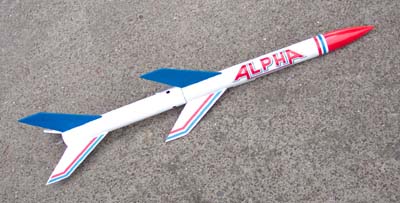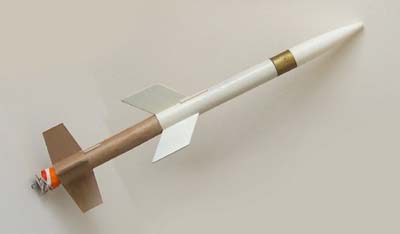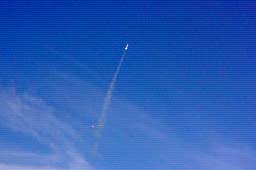
a website for
those who got back into model rocketry as adults
BORN
AGAIN ROCKETEER home
multi-stage rockets
Estes offered a lot of neat two-stage rockets over the years, and even a few three-stagers. I really liked some of them, but I never liked the short boosters. This seemed very un-scale-like. In full-size rockets, usually the booster stage is as big as the upper stage. When I discovered Harry Stine's Handbook of Model Rocketry, this provided a solution. It describes a technique, known as gap-staging, in which the booster ignites the upper stage across a gap of several inches. Vents in the side of the booster prevent pressure from building up, which could cause the stages to separate before ignition has a chance to occur. In high school, I built a gap-staging booster for my Alpha. When I got back into the hobby, I built a new one, using parts from an Alpha kit.

Many of the high-powered rockets people are building today use onboard electronics to eject the parachute. Multi-stage rockets use electronic timers to ignite the upper-stage motor, and eject parachutes from both stages. The rockets are so big that tumble recovery is not a very good option for the booster. I took on the challenge of ejecting a parachute from the booster, without using any electronics.
An early idea on this was embodied in my design, TAO, which was published in Model Rocket News. (The rocket is also unique in having a finless upper stage, spin-stabilized by canted fins on the booster.) This system uses some finicky hatches to release the parachute at booster burnout. I wanted to come up with a better method, that wouldn't compromise the body tube walls. The solution is to slide the booster engine mount out the back of the body tube. It's a more complex variation on the gap-staging method described above.

After a number of failed attempts, I finally got it to work! And I think it will be pretty reliable, now that I know how to do it. Here is a video of a successful flight. You can even see the booster parachute deployment if you pause the video.
